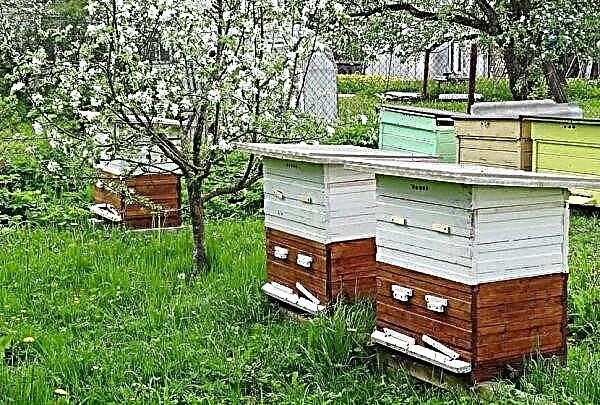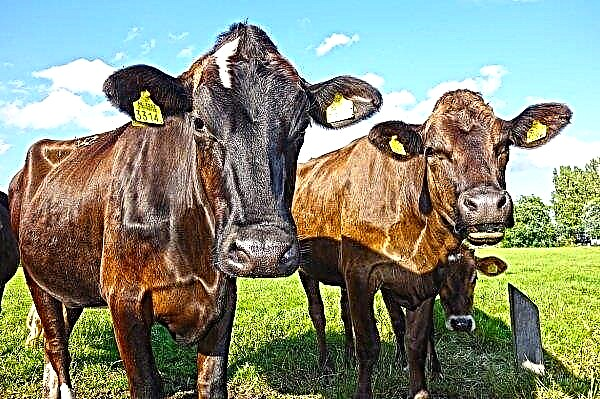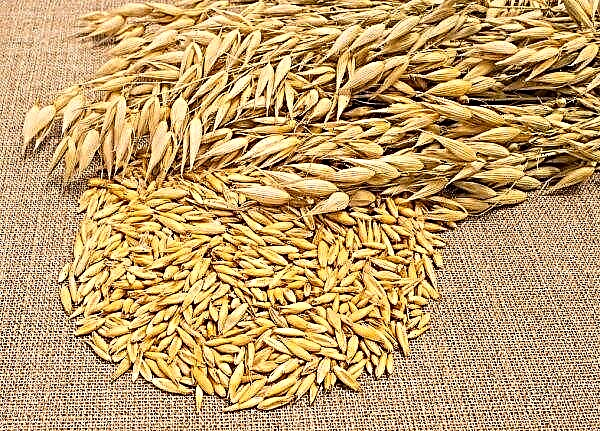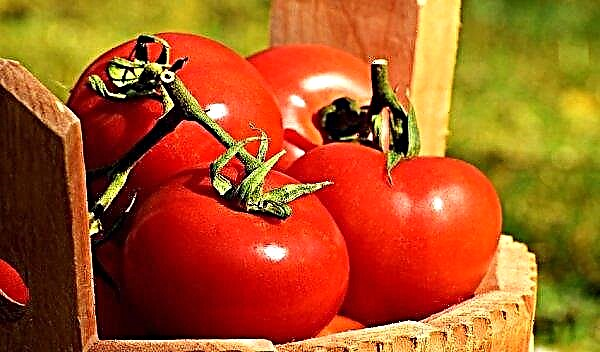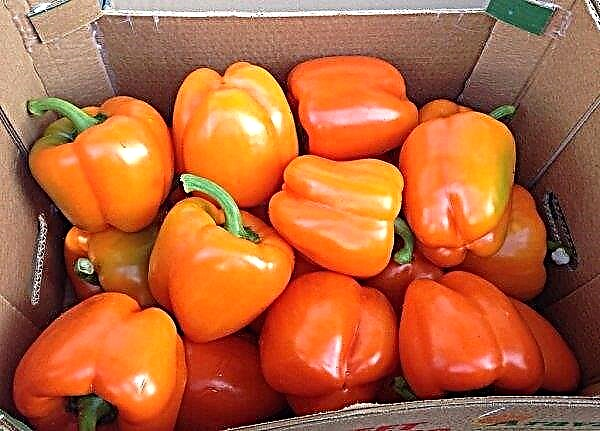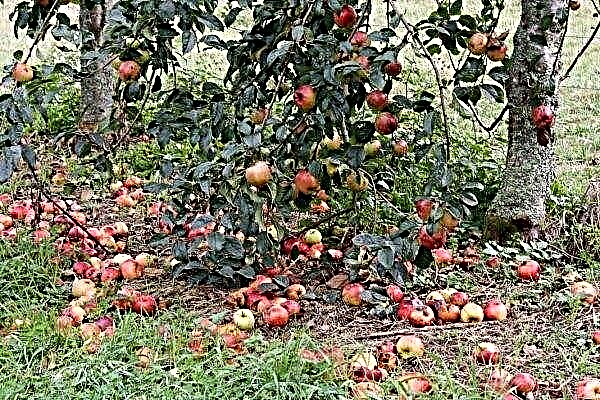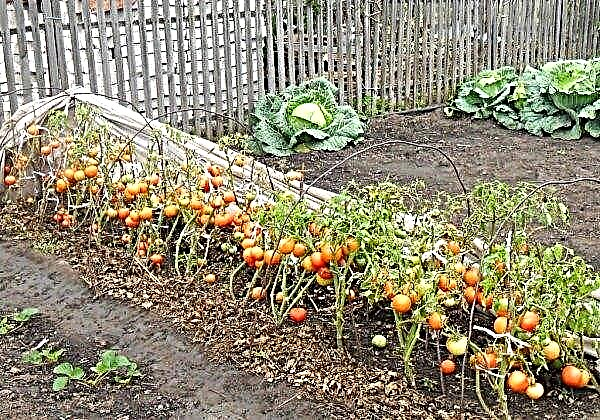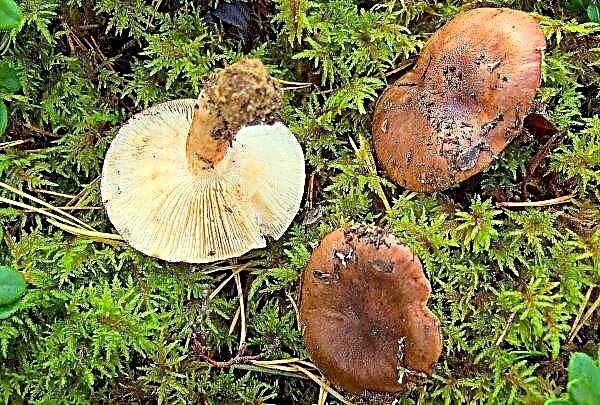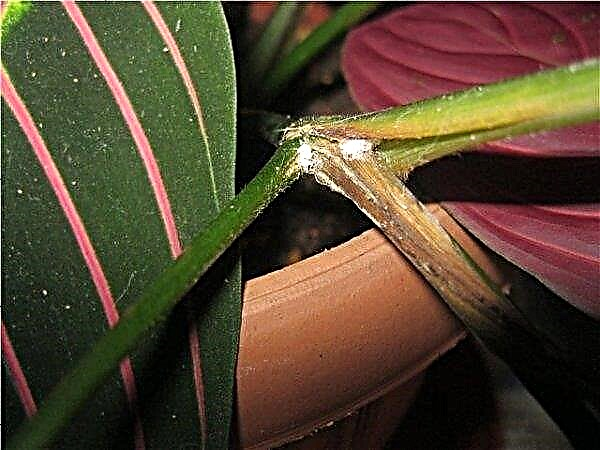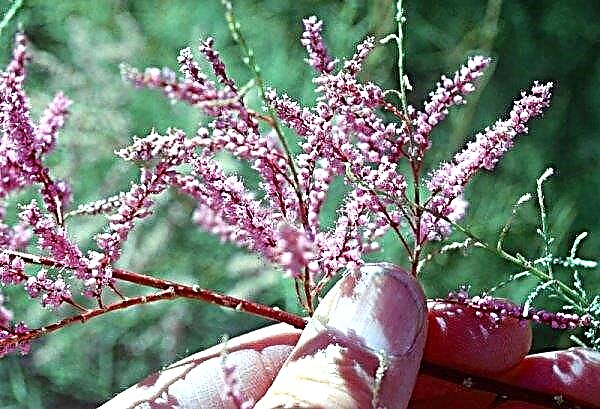A personal plot is not only a place where you can grow healthy, environmentally friendly vegetables and fruits, but also an opportunity to show your creativity, because it is here that you can create unique landscape compositions that will catch your eye and give aesthetic pleasure. It is enough just to choose and combine the decorative plants correctly, for example, to plant a thuja Globosa Aurea with a blue Christmas tree Glauka. How to grow Thuja occidentalis Globosa Aurea read in the article.
Grade description
Thuja Globosa Aurea - a bright decoration of the garden landscape, which exudes a pleasant coniferous aroma. The plant is widely used in landscaping not only due to its attractive decorative qualities. The tree is not demanding in maintenance, compact and attracts the eyes with its unusual natural spherical shape.
Globose is a representative of the Cypress family. The plant is considered to be evergreen and is distinguished by longevity.
Did you know? American natives used the green parts of thuja as a medicine with which they struggled with headaches and scurvy. The secret of such a peculiar remedy is that it is rich in vitamin C.
Western thuja Globosa Aurea - a dwarf plant, belongs to the slowly growing representatives of the genus gymnosperm conifers. The average height of the culture is 1.2 m.

It grows in the form of a bush, the short and upward branches of which are covered with thick, scaly needles, painted in yellow-green color.. In winter, the light lemon shade of the needles changes to brown, and in the summer it takes on a dark green tone. Therefore, the described representative of the Cypress family can be called a chameleon plant. It is worth noting the pleasant velvety needles to the touch - its scales are flat, densely arranged to each other.
In the description it is worth noting that in the autumn on the shrubby tiny cones appear, the diameter of which does not exceed 1 cm. In the cones, the seed ripens, which can be used for sowing.
Shoots grow evenly, which is the key to the formation of a symmetrical crown, almost without human intervention, that is, without cropping. Culture, as it grows, becomes like a green sphere.
Branches of Globose Aurea grow very densely relative to each other, and they are characterized by crossing. The bark of young plants is smooth and painted in red-brick color, with age changes to gray-brown. The more “mature” the shrub, the more intense the bark begins to become covered with cracks and become fibrous.
Did you know? The duration of the vegetative period of the thuja Globosa Aurea may exceed 200 years.
Western thuja Globosa Aurea is distinguished by its compact parameters (for a ten-year-old plant): height - 1.2 m, width - 1.0 m. In one year, the plant grows no more than 5 cm. The root system of the culture is compact, close to the upper soil layer. This suggests that the plant can be seamlessly grown in containers and, if necessary, easily moved.
Seedling Selection
Planting a thuja on a personal plot begins with the right choice of seedlings. It is recommended to purchase them in specialized stores or nurserieswhose owners breed this culture professionally.

For good rooting, it is preferable to buy young plants whose root system is closed. It is imperative to conduct a thorough inspection of the seedling, and make sure that its ground part is not damaged and has no signs of disease, as the healthy appearance of needles and shoots, as well as their characteristic color, will tell.
When buying plants in containers, pay attention to the surface of the soil is clean (without signs of mold, unnatural inclusions, etc.) and moist. Seedlings whose rhizome is open should be carefully examined to make sure the root processes are intact, resilient and healthy.
Site preparation
When planting thuja globosa should give preference to sunny, well-lit areas. You can, of course, plant it in partial shade, but you must be aware that it can soon lose its decorative qualities: the needles will lose their bright color, and the crown will become dull and loose.

Take into account the fact that crop does not tolerate high soil moisture, therefore, in areas with a close occurrence of groundwater, make artificial elevation before landing, or choose another place. The plant is afraid of drafts and sudden gusts of wind.
Important! Thuja Globosa Aurea is well tolerated by polluted and gas polluted air in megacities or large industrial cities. This feature explains the fact that culture is often planted for landscaping cities.
The preparation of the seat consists in digging the soil, cleaning it of weeds and plant debris (sow roots, nettle and other perennials). The shrub is unpretentious to the type of soil, but it is preferable to plant it on light, loose or peaty soils, preferably slightly acidic.

Phased Landing Procedure
The above agrotechnical manipulation consists of the following steps:
- Digging holes with equal parameters, approximately 60 × 60 × 60. It is important that the pit exceeds the capacity format (about 20 cm) in which you purchased the planting material. The optimal distance between plants should be 2 m.
- Well bottom drainage. Stagnant moisture at the roots of the plant is fraught with its death, so take care of good drainage. To do this, lay the bottom of the pit 15–20 cm with expanded clay, gravel or brick layer.
- Preparation of fertile soil mixture. Mix the turfy soil that you received in the process of digging the hole with humus, sand and peat. The optimal proportions are 2: 1: 1: 1.
- Direct landing. Form a small elevation from the fertile soil in the middle of the hole and place a seedling on it. Install a plant with a closed root system along with a lump of soil, and if the rhizome is open, then carefully straighten all the roots. Water the seedlings abundantly before planting.
- Pit falling asleep. Fill the hole with the remaining soil and slightly compact.
- Watering and mulching. Pour the planted thaw abundantly with water and mulch the trunk circle with a layer of peat or humus.

Follow-up care
Caring for a thuja is easy. It is enough to water, feed, trim the shrub in a timely manner, as well as mulch and loosen the soil, carry out preventive measures against ailments and pests.
Important! Thuja Globosa Aurea can be planted in spring, when a stable warm temperature is established and there is no risk of frost returning, or — at the very beginning of autumn.
Watering and feeding
For one month after planting, the plant is watered once a week, using 1.5 buckets of water for this. Then you can reduce the number of irrigations - once in 14 days. When the weather is hot for a long time, it is watered twice a weekusing up to two buckets of water for the plant.

The first two years after planting, the crop does not need additional fertilizing. In the third year it is fertilized:
- humus and compost in early spring and June. Organics are introduced into the near-stem zone of the plant, having previously removed the top soil layer (10 cm);
- mineral fertilizers (nitrate and ash). 50-60 g of nutrient mixture is used per 1 m², which is prepared in the same proportion of these components. The application period is the same as the organics, but top dressing needs to be alternated.
Important! Do not forget to sprinkle the western thuja. The best time for the procedure is evening. Frequency - the same as ordinary watering.
Trimming and Shaping
Trimming thuja Globosa Aurea is carried out for sanitary purposes and to give an attractive shape. Sanitary procedures should be carried out in the spring, removing damaged and broken branches.
The formation of the crown consists in shortening the shoots (by one third), which are distinguished from the total mass by their size and negatively affect the decorative qualities of the shrub. Every 2-3 years they recommend rejuvenating thuja - shorten all shoots by half the length
Every 2-3 years they recommend rejuvenating thuja - shorten all shoots by half the length
Shelter for the winter
Despite the high frost resistance of the thuja Globosa, before the onset of winter cold and frost it should be covered with agrofiber. It is advisable to tie the branches so that the layers of snow do not break them.

Disease and Pest Prevention
The described variety is distinguished by good immunity to diseases and pests.. However, the plant may be attacked. thuja aphids or false insects. Small insects that settle in the lush crown of the plant feed on needles, which adversely affects the decorativeness of the plant: it can turn yellow and drop needles. Spraying with fungicides or insecticides will help get rid of pests: "Bioshield", "Aktofit", "BI-58". Cultivate the culture in early spring and early summer. The spraying procedure is double, with an interval of 2 weeks.
Western thuja Globosa Aurea is sensitive to fungal diseases - Fusarium, rust. Treatment of shrubs with copper or iron sulfate will help get rid of fungal infection.

Landscape design application
Thuja Globosa is widely popular among landscape designers. Specialists use this spherical plant to create delicious green compositions.
Did you know? The ancient name of the thuja is the Tree of Life.
Among the most common applications are the following:
- As a hedge. It is advisable to plant shrubs along the windows, near the summer terrace, terraces, arbors, balconies.
- Decoration of rosaries, rockeries, mixborders or rock gardens. Thuja Globosa is combined with other green shrubs, flowers, garden plants.
- Landscaping of lawns, borders, park and garden paths - single or composite plantings with a western representative of conifers.

Almost every amateur grower or landscape designer can, if desired, create an attractive garden composition and enjoy the beautiful scenery outside the window every day. All that is needed is to correctly combine decorative plants, among which the thuja Globosa Aurea occupies an honorable place.

